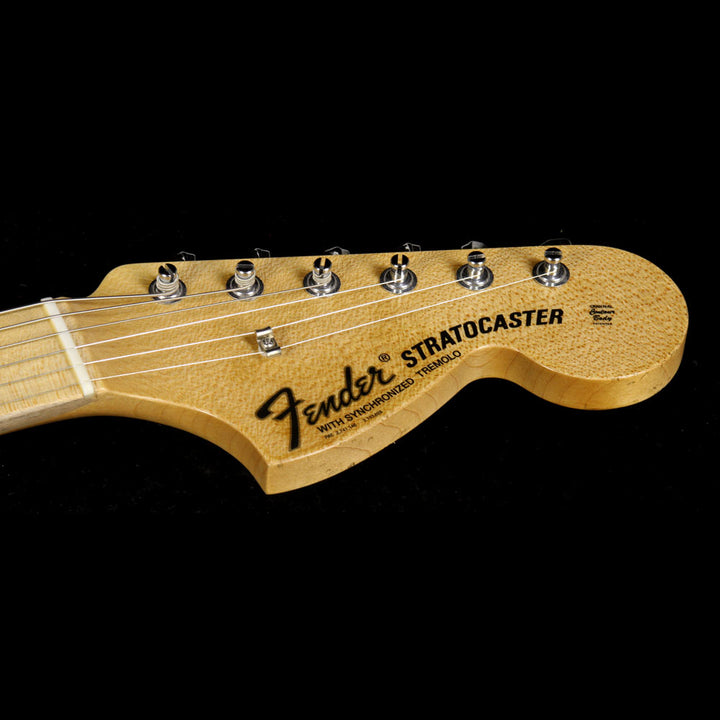
- FENDER STRATOCASTER MODEL FROM SERIAL NUMBER SERIAL NUMBER
- FENDER STRATOCASTER MODEL FROM SERIAL NUMBER PLUS
- FENDER STRATOCASTER MODEL FROM SERIAL NUMBER SERIES
The Lace Sensors represented a revolutionary new design for single coil pickups-having a unique radiant field barrier system that surrounds both the coil and magnets, eliminating the annoying 60-cycle hum. Crisp, and quiet, they really do perform like a 1950s pickup, but with no hum. These pickups were designed to give a ’50s single coil sound with a lot of chime and even bell-like tones.
FENDER STRATOCASTER MODEL FROM SERIAL NUMBER PLUS
The standard Plus usually came with 3 Gold Lace Sensor pickups. The above Aqua Blue is a stock 1988 Plus in mint condition which had the pickguard changed to the periold style. Let’s take a closeup look at the features of the Standard Plus. I have seen American Standard Strats with Lace Sensors that people try to pawn off as a Plus so beware! One thing is for sure-even though these guitars vary, all Plus guitars had: locking tuners a roller nut (which means the headstock will not have string trees) and Lace Sensor pickups. A Lace Sensor “Dually” was also used in the Ultra and some Tele Plus’ using two Lace Sensors placed side-by-side, looking like a humbucker though they were actually two independent pickups. Finally, as we talk about the Plus Series, the Fender-Lace Sensor pickups, invented by Don Lace, were introduced in 1987. When the Corona plant was started up, only the Vintage Reissue Stratocaster models were produced between late 1985 through 1986. from February, 1985 to October, 1985 (almost 8 months). This article discusses the Standard Plus.Īfter CBS sold Fender in 1985, there was no production of Fender guitars in the U.S.

FENDER STRATOCASTER MODEL FROM SERIAL NUMBER SERIES
All the Plus Series had similar features. The Plus Series was a very good attempt to reclaim Fender USA’s floundering reputation, as quality had drasically gone down hill under CBS ownership. (Production stopped in late 1998 or early 1999.) The Plus Series consisted of the Plus, the Plus Deluxe, and then later, in 1990, the Ultra. The Strat Plus Series was introduced by Fender in 1987 and was the highest-end production model next to Fender’s Custom Shop guitars. For a while both Fujigen, Dyna and Tokai manufactured the very first “Crafted in Japan” Fender guitars together.The Stratocaster Plus Series, by Jeff Reich* This happened virtually at the same time as the Fender Japan idea to change the Made in Japan decal. Ace, suggested bringing Dyna Gakki into the picture. At that time, Fender was increasing their orders to Fujigen and delays were starting to happen. In fact, in the second half of the 1990s, Sam Sekihara, Managing Director of Fender Japan, approached Fujigen with the idea to change the “Made in Japan” decal with “Crafted in Japan” with the aim of giving a little boost to the image and setting their instruments apart from other Japanese instruments. However, this change was not due to the shift of production from a factory to another, as often reported. Between 19 Fender gradually shifted to the "Crafted in Japan" decal, paving the way for the CIJ Era.
FENDER STRATOCASTER MODEL FROM SERIAL NUMBER SERIAL NUMBER
Until 1997, the serial number of these guitars was paired with the "Made in Japan" decal (period called MIJ Era).

Probably the 1984-1987 date might have come from one wrong source - most likely the "How can I find out when my Japanese-made instrument was manufactured?" page of the Fender website - and everyone since has copied it. In fact, as suggested by Bill Alston, they were manufactured until 1989. A common mistake is dating a Japanese Stratocaster with “E” serial number from 1984-1987, as often reported.


 0 kommentar(er)
0 kommentar(er)
